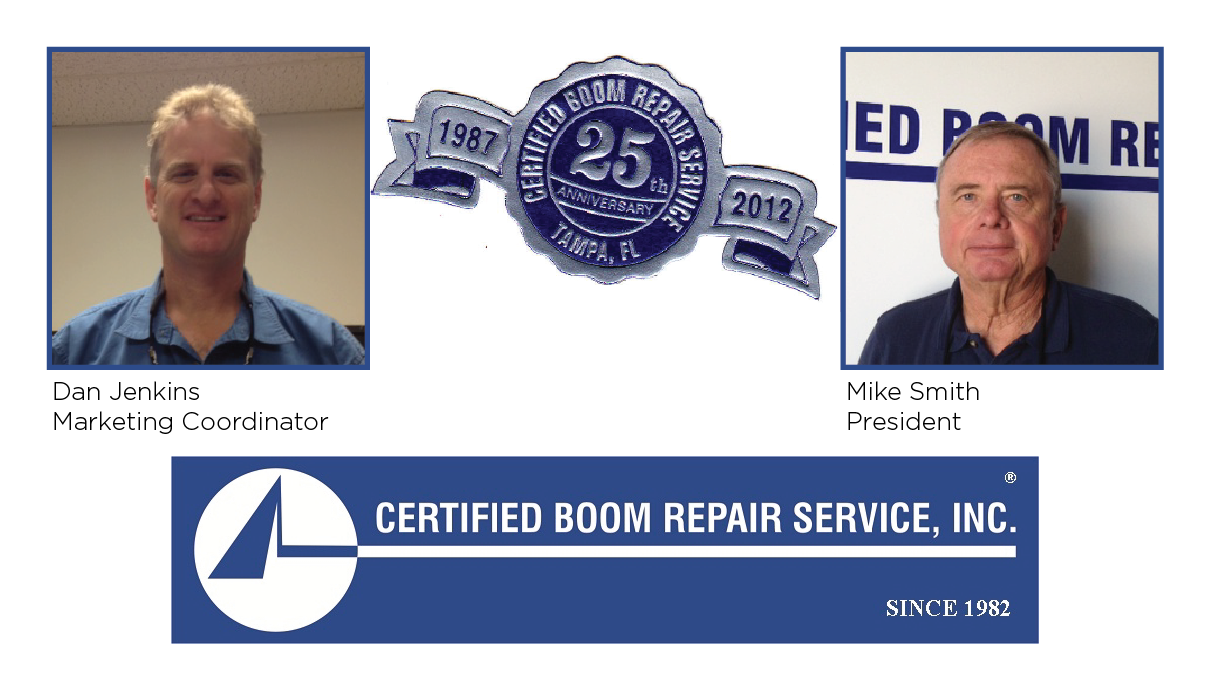
By Dan Jenkins, Marketing and Sales Coordinator, and Mike Smith, President, Certified Boom Repair, Inc.
Most managers and owners of tree industry operations agree that changes in the economy over the last five years have resulted in the need to become more efficient in terms of equipment utilization and maintenance with fewer dollars than ever before. It’s no longer financially realistic to simply go trade in a boom, bucket or grapple truck for a new one as the old one shows significant wear.
What hasn’t changed in the industry is the need for operators to work the equipment to its maximum on a continual basis and indeed to the point of abusing and overextending its capabilities. An industry professional was recently quoted saying: “It’s more likely to find “Big Foot” eating at McDonalds than to find a boom operator who can feather a load”.
Successful tree companies must learn not only to do a better job of preventive maintenance on their equipment than ever before, but more importantly to understand that equipment refurbishment can do wonders for their budgets and long term cash flow.
Extending the life of heavy equipment has been a recurring topic in this industry forever. We hope the information below may prove helpful in making better decisions regarding the “scrapping”, trading, replacing or refurbishing of the equipment.
When is the best time to perform an equipment overhaul?
Depending on the extent and intensity of usage and quality of the PM program, booms, buckets and grapple trucks start seeing significant hydraulic cylinder and plumbing leakage and bypassing, controls malfunctions, weldment cracking and excessive “play” in bearings, bushings and pin connections in the six- to ten-year timeframe.
How deep into the piece of equipment do you and others in your field typically go?
For arborists, two classifications pertain:
This does not necessarily result in a pretty new machine, but one which will serve you reliably and safely for another five plus years.
What are some major components that can be refurbished and what are some of the most common issues and repairs found in the tree industry?
A tree company can expect 40-50% savings off the purchase of new equipment, depending on the type and condition of the machine. The typical time frame to refurbish a single bucket truck or grapple truck is roughly 60-90 days. Many tree companies are concerned about recurring problems after major repairs and wonder what typical industry warranties are. Warranties on parts are set by the manufacturer while the warranty on the labor is provided by the company doing the equipment rebuilding.
If considering refurbishing, do your homework!
Make sure whoever refurbishes the equipment is able to provide documentation of welding procedures used for all boom repair and structural repairs, and documentation that all welders are certified under the American Welding Society. They should also be able to provide documentation of a Load Test – a test to determine a specific load for which a crane or hoist is designed. This test includes checking cylinders, valves, seals & fittings, excessive boom deflection, winch operation and load line fraying.
In conclusion, with demands to keep operating budgets and capital purchases low, tree companies have a dilemma when it comes to replacing aging equipment. Regardless, at the end of the day tree companies must supply their workforce compliant and properly functioning bucket and grapple trucks to perform duties safely and in a timely manner. This is particularly true during emergency situations, both natural and man-made. If replacing new equipment every five years is not within reach of your budget, one option to consider is refurbishing the fleet of bucket and grapple trucks based on needs and condition of equipment.